Antarctica…one of the last wilderness frontiers. With all the talk in the news these days about the Larsen B Ice Shelf in Antarctica breaking apart, I thought I’d see what information I could find out about it from an imagery perspective. It turns out just figuring out where the named ice shelves are located is a feat that requires not only looking at imagery, video, old maps, named geographical features, but also reading the description of where it should be and looking at line drawings to finally pinpoint it. Antarctica is so vast that they haven’t even named all the natural features there, only a small fraction of them. During my search, I ended up reading and learning a lot about ice shelves, ice sheets, Antarctica, destabilization of glaciers and sea level rise. 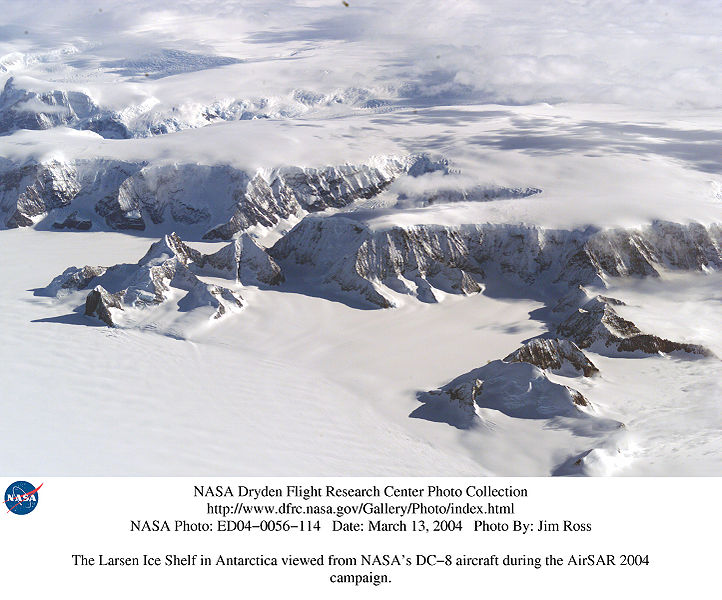 I had never heard about ice shelves [1] before, and I guess I always imaged what scientists were talking about were glaciers. But as anyone from a cold climate will tell you, there are many different ways to describe snow and ice. ‘Antarctica’s ice shelves are like cliffs of ice that extend from the shelf of the continent out into the ocean. Without ice shelves to impede their movement, Antarctic glaciers flow into the ocean at much faster rates, accelerating global sea level rise’.[2] That is not good news. As for the Larsen B Ice Shelf, respected scientists think it will completely break apart this decade.
I had never heard about ice shelves [1] before, and I guess I always imaged what scientists were talking about were glaciers. But as anyone from a cold climate will tell you, there are many different ways to describe snow and ice. ‘Antarctica’s ice shelves are like cliffs of ice that extend from the shelf of the continent out into the ocean. Without ice shelves to impede their movement, Antarctic glaciers flow into the ocean at much faster rates, accelerating global sea level rise’.[2] That is not good news. As for the Larsen B Ice Shelf, respected scientists think it will completely break apart this decade. 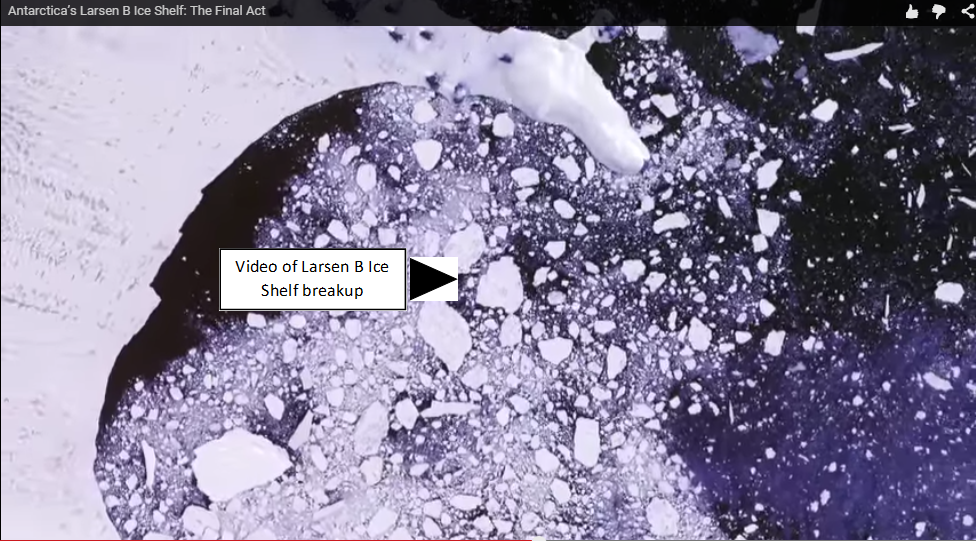 I continued my search for remotely sensed Antarctica imagery, which as you can imagine, is not as easy to find as for the rest of world. This led me to the USGS (United States Geographical Survey) web pages. Here, they explain that during the International Polar Year (IPY 2007-2008) the U.S. Geological Survey (USGS), the British Antarctic Survey (BAS), and the National Aeronautics and Space Administration (NASA), with funding from the National Science Foundation (NSF), created LIMA (Landsat Image Mosaic of Antarctica) from more than 1,000 Landsat ETM+ scenes.[3] You can download these Landsat scenes or use the online Antarctic Research Atlas to zoom around and see the Antarctic in stunning detail from Natural-Color, Pan-Sharpened LIMA (bands 3, 2, 1) imagery. “The Landsat Image Mosaic of Antarctica (LIMA) is seamless and virtually cloudless. LIMA is the most geometrically accurate (within a pixel—30 meters by 30 meters of land) mosaic of Antarctica and has the highest spatial resolution”.[4] In addition, they’ve made these map services available from their website, so it is easy to add this imagery to ArcGIS to do additional analysis.
I continued my search for remotely sensed Antarctica imagery, which as you can imagine, is not as easy to find as for the rest of world. This led me to the USGS (United States Geographical Survey) web pages. Here, they explain that during the International Polar Year (IPY 2007-2008) the U.S. Geological Survey (USGS), the British Antarctic Survey (BAS), and the National Aeronautics and Space Administration (NASA), with funding from the National Science Foundation (NSF), created LIMA (Landsat Image Mosaic of Antarctica) from more than 1,000 Landsat ETM+ scenes.[3] You can download these Landsat scenes or use the online Antarctic Research Atlas to zoom around and see the Antarctic in stunning detail from Natural-Color, Pan-Sharpened LIMA (bands 3, 2, 1) imagery. “The Landsat Image Mosaic of Antarctica (LIMA) is seamless and virtually cloudless. LIMA is the most geometrically accurate (within a pixel—30 meters by 30 meters of land) mosaic of Antarctica and has the highest spatial resolution”.[4] In addition, they’ve made these map services available from their website, so it is easy to add this imagery to ArcGIS to do additional analysis. 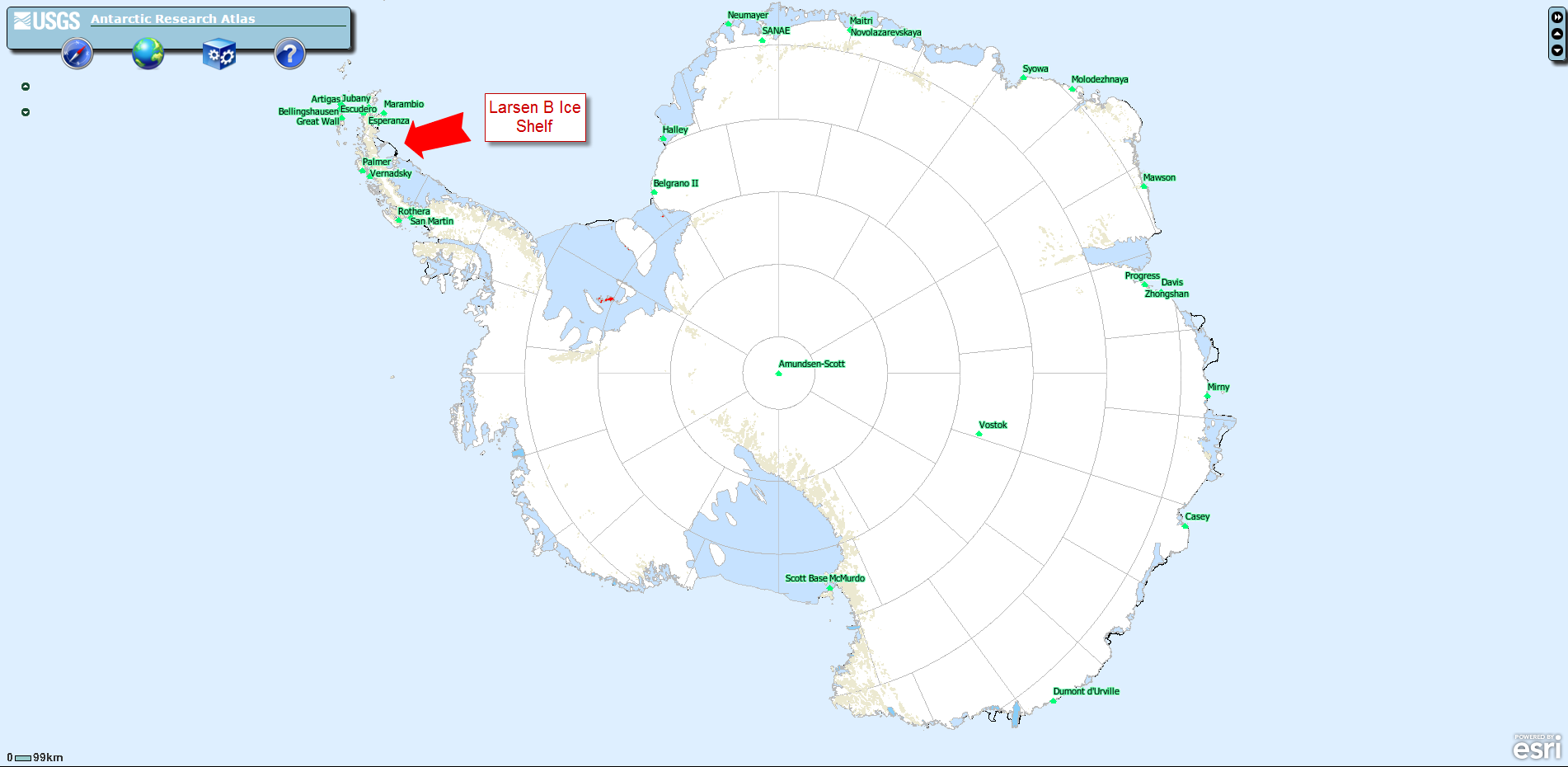
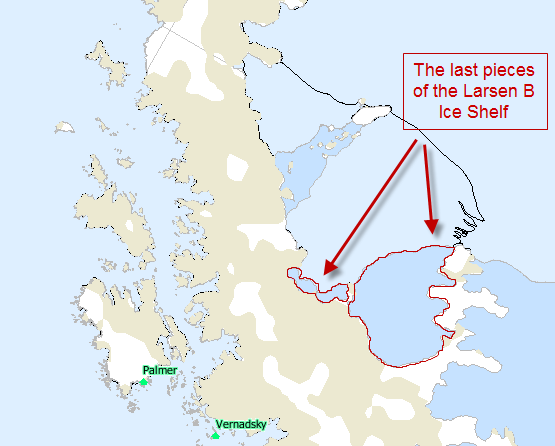
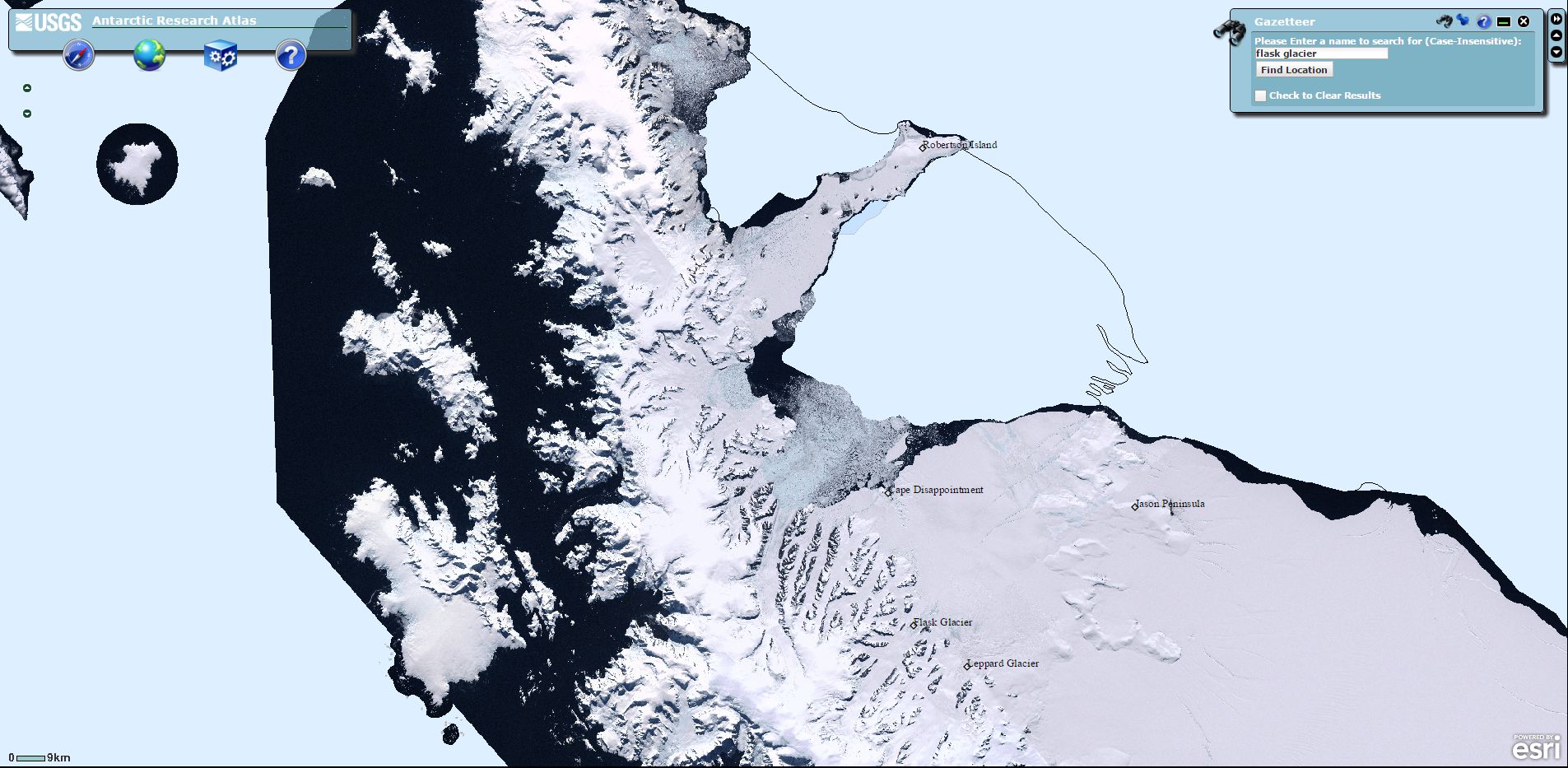
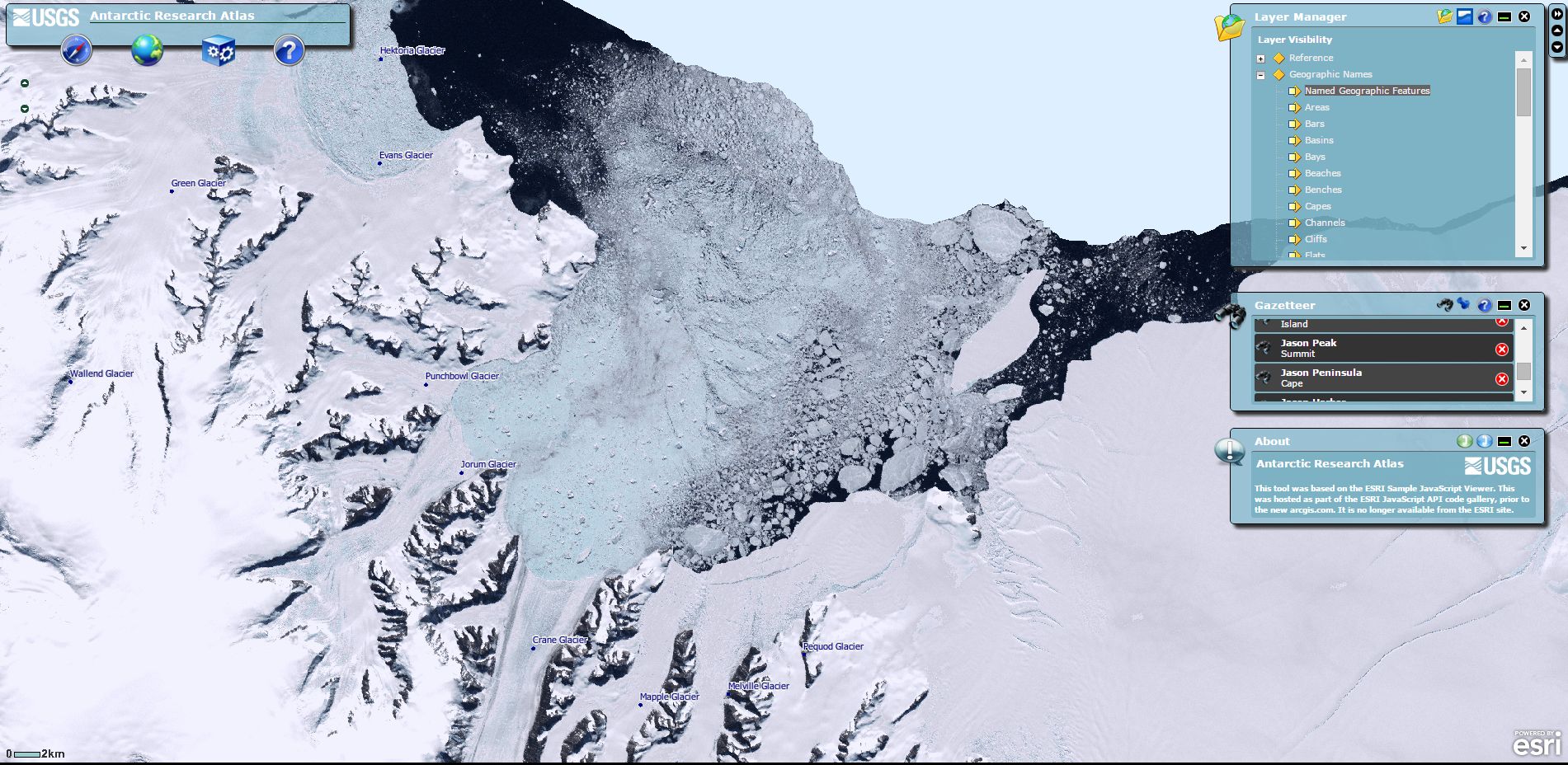 The Antarctic Research Atlas displays a treasure trove of high resolution imagery for Antarctica with easy to use tools, such as a gazetteer (geographical dictionary helpful for searches), which was invaluable for actually pinpointing the location of the Larsen B Ice Shelf.
The Antarctic Research Atlas displays a treasure trove of high resolution imagery for Antarctica with easy to use tools, such as a gazetteer (geographical dictionary helpful for searches), which was invaluable for actually pinpointing the location of the Larsen B Ice Shelf.
Producing LIMA was a big undertaking for the U.S. Geological Survey (USGS), the British Antarctic Survey (BAS), and the National Aeronautics and Space Administration (NASA), with funding from the National Science Foundation (NSF). They used over 1,000 Landsat scenes to stitch together this mosaic. It’s been eight years since it was produced; unfortunately it looks like it might be time to update this imagery.
I hope to have an Esri Story Map out about Larsen B Ice Shelf and Antarctica in the upcoming month, and I’ll update this post as soon as it is available.
Also, just for fun, check out this incredible video of Antarctica from Kalle Ljung filmed from a sailing yacht with a GoPro HERO3+ Black Edition and DJI Phantom 2 drone. Ahhh…beautiful, remote Antarctica. 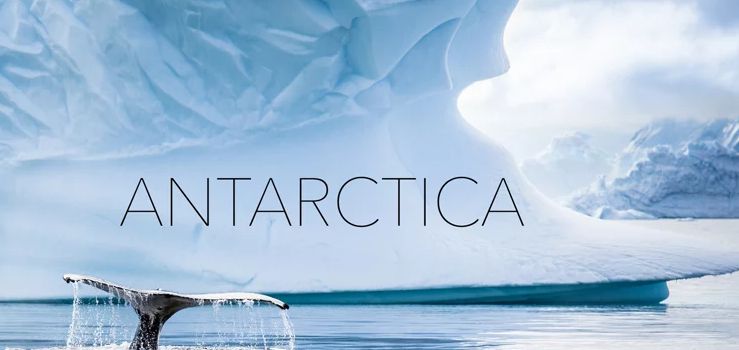
Commenting is not enabled for this article.